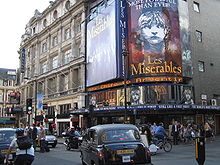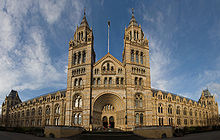

Within the City of Westminster, the entertainment district of the West End has its focus around Leicester Square, where London and world film premieres are held, and Piccadilly Circus, with its giant electronic advertisements. London's theatre district is here, as are many cinemas, bars, clubs and restaurants, including the city's Chinatown district (in Soho), and just to the east is Covent Garden, an area housing speciality shops. The United Kingdom's Royal Ballet, English National Ballet, Royal Opera and English National Opera are based in London and perform at the Royal Opera House, the London Coliseum, Sadler's Wells Theatre and the Royal Albert Hall as well as touring the country.

London is home to many museums, galleries, and other institutions, many of which are free of admission charges and are major tourist attractions as well as playing a research role. The first of these to be established was the British Museum in Bloomsbury, in 1753. Originally containing antiquities, natural history specimens and the national library, the museum now has 7 million artefacts from around the globe.
In 1824 the National Gallery was founded to house the British national collection of Western paintings; this now occupies a prominent position in Trafalgar Square. In the latter half of the nineteenth century the locale of South Kensington was developed as "Albertopolis", a cultural and scientific quarter. Three major national museums are located there: the Victoria and Albert Museum (for the applied arts), the Natural History Museum and the Science Museum. The national gallery of British art is at Tate Britain, originally established as an annexe of the National Gallery in 1897. The Tate Gallery, as it was formerly known, also became a major centre for modern art; in 2000 this collection moved to Tate Modern, a new gallery housed in the former Bankside Power Station.